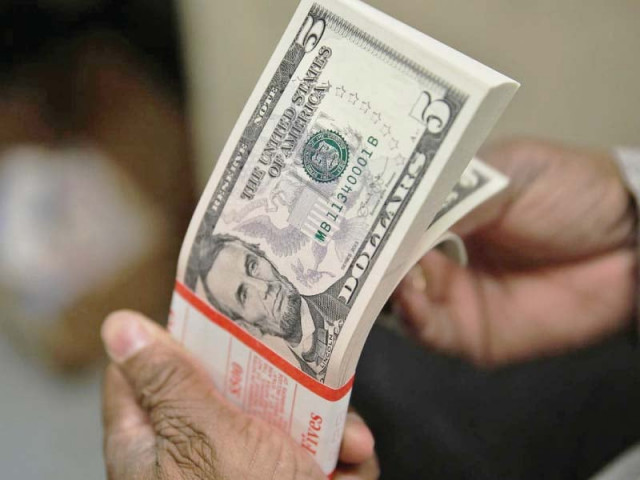Rupee falls as country prepares for IMF deal
Weakens to 142.50 against the US dollar in open market

Such measures (rupee depreciation) have never delivered the desired result of reviving exports and trimming imports, but they have increased the cost of doing business and badly damaged investment climate in the country. PHOTO: FILE
With this, the rupee has cumulatively dropped Rs2.25, or 1.6%, in the past three weeks in a fresh round of depreciation, according to the central bank.
The IMF has asked Pakistan to end state control over the rupee and let the currency move freely to find its equilibrium against the US dollar and other major world currencies.
Also, the World Bank, which finances some of the infrastructure and social safety net projects in Pakistan, has supported the idea of leaving the rupee free from state control in a bid to give much-needed boost to exports and fix a faltering economy.
Rupee drops to record low of 139.25 against US dollar
“It seems that Pakistan has agreed with the IMF condition (of leaving the rupee free),” renowned businessman Arif Habib said in comments to The Express Tribune.
“Approaching the IMF for financial assistance is a good decision of the government. However, it should have thoroughly negotiated and entered into the loan programme on its own conditions instead of taking dictation,” he said.
A leading banker, however, linked the fresh rupee deprecation with the uptrend in crude oil prices in world markets.
Pakistan heavily relies on imported petroleum products, which account for around one-fourth of the total import bill. The country’s foreign currency reserves, however, are insufficient to continue making expensive import payments and external debt repayments.
“The situation has mounted pressure on the rupee and has forced the authorities to agree to further depreciation,” he said. “This coincides with the IMF condition of allowing the rupee to move on its own fundamentals.”
Finance Minister Asad Umar said the other day the government was close to reaching an agreement with the IMF for a long-term loan programme.
“There is a possibility that Pakistan and the IMF may sign a deal at the end of IMF’s staff-level mission, which will arrive in the third week of April,” he said. Discussions would also take place during spring meetings of the IMF and World Bank in Washington next month, he added.
Habib, however, criticised the government for letting the rupee depreciate, saying such measures had never delivered the desired result of reviving exports and trimming imports, but increased the cost of doing business and badly damaged investment climate in the country.
He said authorities had let the rupee depreciate by a cumulative 33.4% in the past 15 months. However, exports have remained sluggish and a drop in imports came mainly due to a decrease in import of machinery and services for projects of the China-Pakistan Economic Corridor (CPEC). Early harvest projects of CPEC, funded by the Chinese, are close to completion.
The depreciation has, however, contributed a lot to the rising inflation in Pakistan. “The government should make policy decisions keeping in view the ground realities instead of implementing book formulas,” he suggested.
Pakistan Forex Association President Malik Bostan also linked the movement in rupee with the upcoming IMF programme.
Rupee at 142.5 in open market
“The retail market of the rupee follows the inter-bank market. Accordingly, the open market witnessed a fall in the rupee’s value against the dollar,” Bostan said.
The Pakistani currency shed one rupee to Rs142.50 to the US dollar in the open market on Friday, according to Dollar East Exchange Company.
Bostan said speculation about further currency depreciation in connection with the IMF’s condition prompted people to buy dollars. It created additional demand for dollars in the open market.
Apart from that, pilgrims going to Saudi Arabia for Umrah and Haj also bought dollars and riyals, he said.
Published in The Express Tribune, March 30th, 2019.
Like Business on Facebook, follow @TribuneBiz on Twitter to stay informed and join in the conversation.


















COMMENTS
Comments are moderated and generally will be posted if they are on-topic and not abusive.
For more information, please see our Comments FAQ